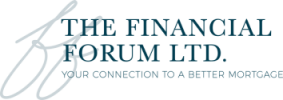More Canadians than ever are self-employed. At the end of 2017, Statistics Canada estimated that 2.8 million Canadians were self-employed which amounts to 15% of the Canadian labor force.
Self-Employment Mortgage for Canadians
Each year around half a million Canadians enter the self-employment workforce. The exact number isn’t known as the term self-employment can be vague. People involved in self-employment might have professional careers, running their own business, be on commission, be freelancers, run a farm, or have other entrepreneurial pursuits. Statistic Canada indicates that self-employed individuals have a higher median income when you compare them to paid employees.
As self-employment grows, lenders haven’t figured out how to make obtaining a mortgage easier for self-employed individuals. The process is getting more complicated because the OSFI or Office of the Superintendent of Financial Institutions which is the banking regulator in 2014 introduced Guideline B-21. This guideline requires banks which are federally regulated to look closely at self-employment incomes before a mortgage application is approved.
For those that are self-employed, the federally regulated mortgage insurer or FRMI should outline steps for lenders to get income verification such as Notice of Assessment or other relevant business documentation. Some of the points they make are:
- Income is verified by an independent source
- The source of the verification is difficult to falsify
- The amount of the declared income is addressed by the verification source
- The documentation and verification information aren’t in contradiction with other information that is provided by the borrower during the underwriting process
A federally chartered bank under the Guideline B-21 is only able to lend 65% of the purchase value of a home to a person that is self-employed which is 10% less than what was allowed previously before you have the need for mortgage insurance. Some credit unions aren’t regulated federally don’t have to follow Guideline B-21 and they may lend you up to 80% without needing default insurance although a higher interest rate usually applies.
Lenders must know that you can pay your loan back. They will assess you based upon net worth, income, and your credit score. If you have a job, then your financial stability is easy because you can show T4 stubs provide pay stubs or get a letter from your boss that shows how much you have earned and so on, but this gets harder to assess if you’re self-employed.
A self-employed worker may get their mortgage through an application that states their income where they prove their self-employment and sign an income declaration. The stated income is how much income that you claim you’re earning. This statement needs to be back up by several documents such as:
- Notice as assessment and income tax returns for 2-3 years. You don’t have to show a large positive income, but you don’t want to show a large loss as this will reduce the chances you are approved.
- Canada Revenue Agency sends a Notices of Assessment each year, so you’ll need to show this to confirm that there is no tax liability. If you keep up with your tax payments that shows that you’re a reliable individual
- Provide proof that GST and or HST is paid
- Articles of incorporation that shows your license or a business license
- Business financial statements. You need to be ready to explain the business income, provide expenses and show when you will break even
- Show that you’re the principal owner in your business
- Show client contracts that show expected revenues for years coming up
- Provide a down payment of at least 15%
What the Lender Looks At
The lender looks at stated income as well as debt service ratios and uses this to qualify you. A debt service ratio is calculated by looking at how much you can pay monthly to own your home. A good credit score is required and if you don’t know your score you can check with TransUnion, Equifax, or other credit bureaus. Your credit score can show you where you might make an improvement in your financial situation. This will show you debts such as credit cards or lines of credit that you can pay down before you go and see the lender. If you’re self-employed, you want to have less debt that someone that has a paid salary.
Genworth Canada is a mortgage insurer and they will classify self-employment as corporations, commissioned sales, sole proprietorship, and partnerships and have different qualifications for each of them. Those that have an unincorporated business, or a sole proprietorship can benefit from incorporation and this allows you to pay yourself a salary and become an employee of your company.
The difference between salaried employees and self-employed individuals is that lenders look at the gross earning is a different way. A lender usually looks at 80% of the gross earnings and the average of the taxable income from last year for those that are on commission. For those that are self-employed, the net income and not the gross income is what is examined. CMHC or the Canada Mortgage and Housing Corporation restrict the lender to only examine three years of self-employment income.
Some lenders all you to add some tax deductions to the income like advertising, car expenses, housing expenses, and capital cost allowances. Other lenders might agree to add a percentage which covers business expenses.
If you have a spouse that’s salaried as it reassures the lender that he or she can co-sign which provides more confidence for the lender. Another option is to have a second co-signer but that second co-signer will also get a title ownership to the property, so this must be with someone that you have trust with.
Summary
It might seem difficult to get a mortgage as a self-employed individual, but a mortgage broker can make it easier for you as they can help you weigh the options available to you and help you get qualified with a reasonable mortgage rate.






